Rome – a relaxed guide to the Eternal City.
What to do and see in Rome once all the staple sights were ticked off your list. This is Rome relaxed guide to the Eternal City.
Walking around Rome and trying to see all the magnificent sights can be exhausting. On my first visit to the eternal city, I did just that. Must-sees like Colosseum, Pantheon, Trevi Fountain or Piazza Navona are on the list of every first-time visitor. But Rome can be also a very relaxing and enchanting city. Here is my guide on where to go and what to see after all the staple sights are ticked off your list.
Rome is the city of echoes, the city of illusions, and the city of yearning.
-Giotto di Bondone
Aren’t we all guilty of it? Trying to see as many sights as possible, sample all the foods (this is not exactly torture), take hundreds of photographs and exhaust ourselves at the end of the day. But how can you not? Rome is so magnificent. History around each corner – a city full of surprises and Ohhh! moments.
I did exactly the same thing on my first visit. And still failed to see everything. It is simply impossible. So on my second visit, I decided to do it a bit differently. Search for a more relaxed way to enjoy the city in pursuit of the enchanting and romantic side of it. I tried to get the ‘Federico Fellini feel.
Luckily, this time, I could stay in Rome for three wonderful days. Also, I went in the winter which was a brilliant idea given in warmer months Rome is packed full of tourists.
Here is a list of my favourite places to visit.
Campo Di Fiori

Visit this bustling market is a great way to inaugurate exploring Rome. Situated just south of Piazza Navona, it is not exactly a hidden treasure but definitely a fun and picturesque one.
Did you know that historically this square used to be a place where public executions used to be held? Famous philosopher Giordano Bruno was burnt there alive due to the Catholic Inquisizione’s charge of heresy on the 17th of February 1600.
Now from the early hours of the day, Campo di Fiori is hosting a vibrant and colourful daily street market where you can purchase fresh fruit, vegetables, Italian cheese and meats as well as spices and other condiments. I love the colours and liveliness of the market so much that I visited twice during my short visit.
At night, the square is bustling with bars and restaurants with many of the restaurants also being open during the day giving you the opportunity to sit, relax and people watch.
A visit to the market could be a great starting point for the day with sights like Piazza Navona, Pantheon or Colosseum situated nearby.
Villa Borghese

After a morning of sightseeing, make your way one to of the most beautiful Roman parks – Villa Borghese. Often missed out of itineraries, this landscape garden is considered Rome’s green lung.
Home to interesting buildings and architectural elements as well as fountains and picturesque lakes – this park is a wonderful place to unwind after a morning filled with walks and sightseeing.
You can rent a boat or bicycle or just sit by the lake and admire street artists playing the harp (true story) and the garden’s wildlife.
Located within walking distance from famous Spanish Steps and right next to Piazza del Popolo (both could be easily visited on your way) this park is conveniently located and can be easily added to your itinerary.
The historic old town (Centro Storico) and the Jewish Quarter
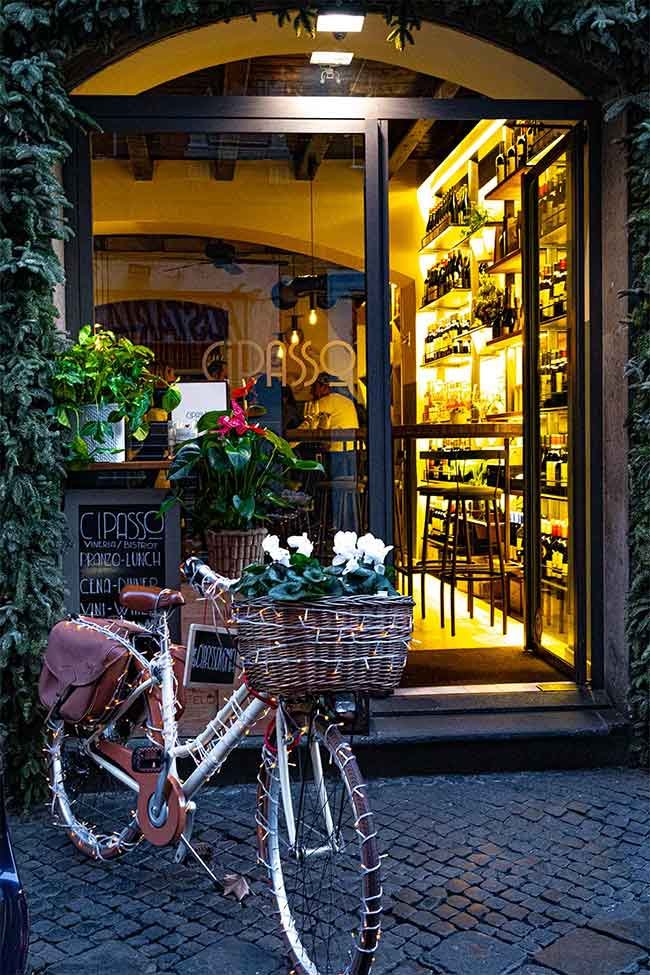
A couple of my favourite places to hang out in the evening for a lovely Roman meal and glass of wine are the narrow streets of Centro Storico and located just next door Jewish Quarter. Filled with authentic restaurants serving the traditional fried or Roman-style (boiled) artichoke starter and spaghetti Cacio e Pepe. Wash it down with a glass of Montepulciano D’Abruzzo and you are in heaven.
Jewish Ghetto in Rome was the oldest Jewish settlement in Europe dating back to 1555 when Pope Paul IV revoked all the rights granted to Jewish people.
Now it is a charming, atmospheric and one of the most interesting parts of Rome – offering both cultural and culinary experiences, thanks to the many restaurants and bakeries scattered throughout the area. Come also along during the day and explore areas and many historical sights like The Great Synagogue of Rome where the Jewish Museum is located.
Continue strolling north towards the Pantheon and more charming Roman streets will be revealed with more restaurants and bars – I could walk around there for hours. Stop during the day for Aperol Spritz and aperitivo or come by in the evening to wind the day down for dinner.
Discover Roman street art



Street art has a very big presence in Rome. Contemporary and urban art received massive international attention, to the point that the city of Rome released a map of Street Art in Rome. (LINK) Work of many very well-established international and Italian artists can be admired on the walls all over Rome with some of the best known being MOMO, Seth, Hitnes, Clemes, Herbert Baglione, Sten Lex, Augustine Lacurci, Jerico or and Alice Pasquini.
Most famous street art destinations include Ostiense, Testaccio, San Lorenzo as well as Quadraro. Follow this link of San Lorenzo Street Art Interactive Map (LINK) for the interactive map of the San Lorenzo district. This map will integrate with your google maps and will help you discover all the hidden urban art around the area.
Districts are scattered around the outskirts of Rome so either chose just one or two areas if travelling by public transport or simply rent a car. To get to Ostiense take a Metro and get off at the Piramide station. Taxis around Rome are pretty inexpensive thus this could also be a feasible option.
This is a completely different side of Rome not known to many visitors but presenting the city in a different more contemporary light.
Gianicolo (Janiculum)
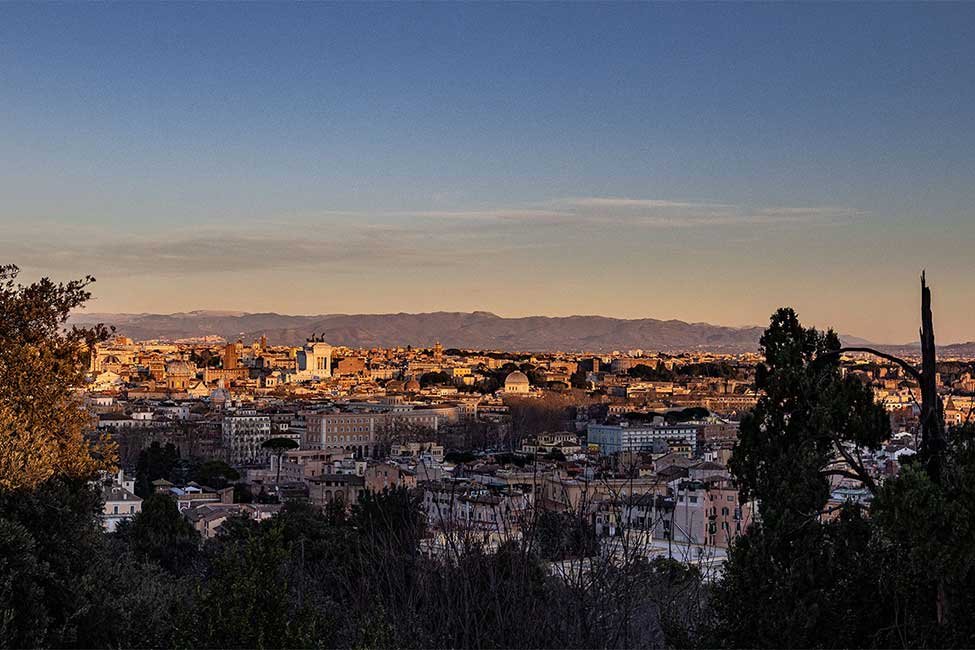
For stunning panoramic views of the city visit Gianicolo. Located in Trastevere, west side of the river Tiber and just above the Vatican, Gianicolo (also known as Janiculum) is the second-highest hill in Ancient Rome offering a bit of a steep walk but rewarding with the most breathtaking views of the ancient city.
According to ancient mythology, Janiculum was a centre for the cult of the god Janus and historically it is known to have played an important role in the defence of the city.
A walk to the top of the hill which is often considered the “Eighth Hill of Rome” can be a bit tiring but for me, it was a great way to sharpen my appetite before dinner in Trastevere.
Trastevere
Walk down Gianicolo Hill and emerge yourself in the lively neighbourhood of Trastevere. My favourite Roman district. The best Restaurants in Rome, serving the most authentic Roman food at a reasonable price can be found here. This is mostly due to Trastevere being popular amongst the locals and students as well as tourists.
Trastevere has far less traffic than other parts of Rome while being largely a pedestrian zone – it is a great place to come and escape the chaos and crowds of central Rome. You will find little streets dotted with restaurants and bars, small markets, shops and pasticerias – this is still a true hidden treasure in Rome although more and more popular amongst the tourists these days.
This for me is a true Roman experience. I always come back here and every single time I did, I had the best meal during my stay. Most of the restaurants offer a simple Roman menu, with a few pasta and pizza dishes traditional to the region as well as famous fried artichokes and Italian bruschetta or focaccia.
With the district being a core of a young nightlife with many bars and a few clubs, it offers an opportunity to have a bit of fun at the end of a hard sightseeing day.
Where and what to eat in Rome (Vegetarian options)
Have a bruschetta or Foccacia for a starter. Foccacia in Rome comes as a thin crispy bread topped with salt and often fresh rosemary. Foccacia I had in Ombre Rosse restaurant in Trastevere was probably the best focaccia I had in my life. Not exaggerating here 🙂
Another traditional Roman starter is an artichoke – deep-fried Jewish style or boiled Roman style. Roman-style artichokes (carciofi alla romana) are stuffed with chopped mint and garlic and cooked in water mixed with oil and white wine. This is my favourite way of eating artichokes. Jewish-style artichokes (Carciofi alla giudea) are deep-fried and crunchy on the outside and super soft and delicious from the inside.
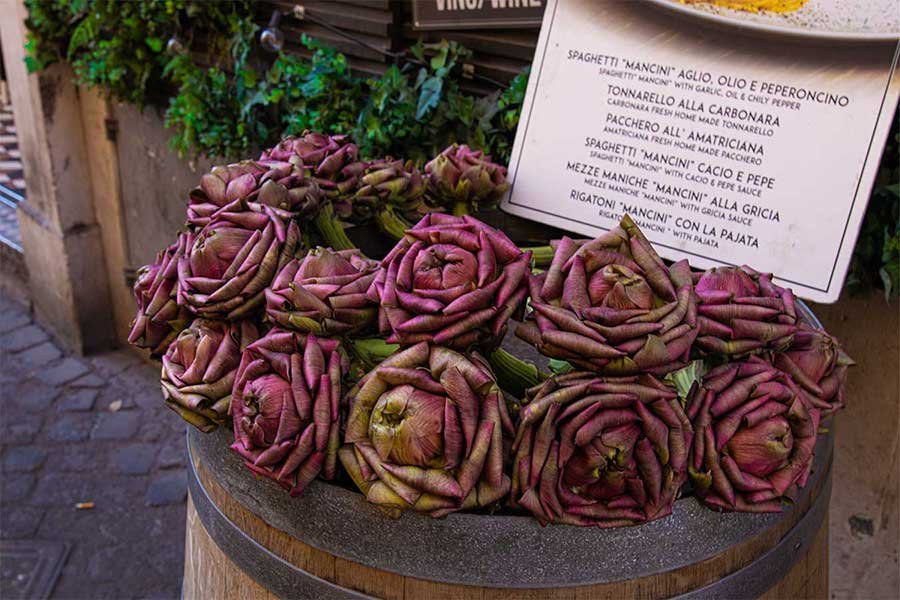
Pasta in Italy, therefore also in Rome is a must! Italian cuisine is divine and I could never get bored of it. A traditional Roman pasta dish you need to try is Tonnarelli Cacio e Pepe. Fresh pasta tossed with salty pecorino cheese and plenty of black pepper. Indulgent and yummy! I also had spinach and ricotta ravioli in Trastevere and I was definitely not disappointed. Try Tagliatelle all’ Arrabbiata if you are a fan of spicy food just like me.
Pizza al taglio (pizza by the slice) – a typical fast-food snack in Rome – came to me as a surprise. I am not a big pizza eater (!!!!) but this delicious slice of heaven converted me for good. I grabbed one on my way to Giannicolo to charge myself before the hike up the hill. A slice of pizza is usually charged by the weight and folded in half like a sandwich. I had a zucchini and mozzarella slice and it blew my mind. Simple ingredients but so full of flavour. You can get those at any corner and there are so many flavours to choose from.
Cannoli!!!!!! Those little rolls of pastries and ricotta actually are traditional to Sicily. I, however, eat them wherever I go. The deep-fried pastry shell is stuffed with a sweet ricotta cream cheese filling and comes in many variations. My favourite is a plane, sprinkled with pistachios.
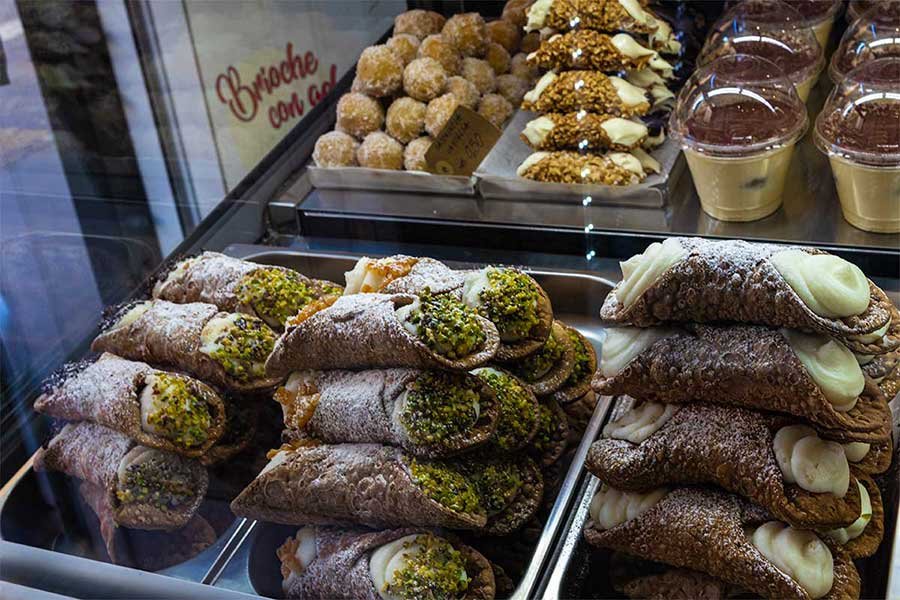
Traditional Italian breakfast consists of coffee and sweet pastry like cream stuffed croissant or brioche but you can have those at any time of the day and there will be plenty of pastries to choose from. And of course famous gelato. One just has to have gelato in Rome and they come in all possible flavours imaginable.
Unfortunately, you need to be choosing your eatery carefully. A lot of centrally located restaurants cater mainly for tourists and quality will not always be what you would expect. Do check their ratings on TripAdvisor. Unfortunately, I did myself have had a fair share of some mediocre experiences.
Trip Advisor is my travel companion when it comes to choosing the restaurant and the only time I was disappointed is when I didn’t follow my companion’s advice. Jewish Getto and Trastevere are probably the safest options with the most authentic restaurants where typically Roman dishes are served. I do wholeheartedly recommend those two districts.
How to travel around Rome
Metro is a great and convenient way to travel around Rome if you are planning to see the most popular sights. There is a metro station just outside of the Colosseum, Circo Massimo, Villa Borghese or Termini Station. I also used taxis in Rome a few times and they were quite inexpensive considering the location and all run on a meter so there is no need to huggle. There are also trams and buses running regularly so if walking is not your thing there are loads of other options.
And of course, there is a hop-on hop off the bus. The bus will take you around Roman’s most popular locations and you can get off and get back on at any time of the day for one single daily fair.
Is Roma Pass worth the purchase? I never got it myself as I do things at my own pace and it never seemed that much of a value for me. It can, however, be a saving for you if you are planning to visit more expensive sights as you will get one free entrance included within the pass.
On my first visit, I prebooked the Vatican pass a month ahead and got quite a good price of €28. Please mind that Vatican visit is not included in the Roma Pass. Book the line-skipping tickets ahead of your visit and you can easily save money and a lot of time.
Unlimited use of the city’s bus and the metro system are included in the pass. I, however, took the Metro twice during my most recent stay and each time I paid €1.5 for a single journey. I took a taxi twice for a combined cost of €16. Travelling around Rome, therefore, cost me €19 for three days as I walked most of the time. You will have to make those calculations and make a decision for yourself and decide whether the pass is a good option for your needs.
You can also rent a bike and cycle around the city. This seems to be quite a popular way to move around as there are bike rental places all over Rome. I was slightly tempted myself however I was a bit scared of the traffic and decided not to in the end.
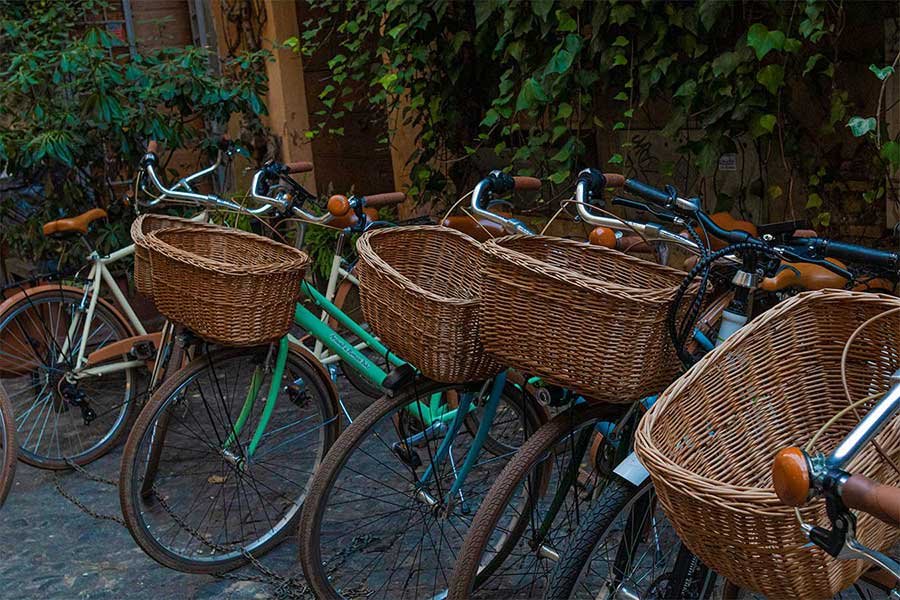
It is absolutely impossible to see the whole of Rome in a few days. It is impossible to see half of it.
But Rome is one of the few cities in the world I could visit multiple times and never get bored of. It has so many faces. Delivers so many feelings. A city you can never forget – a city you must experience!
“A fool is one who admires other cities without visiting Rome.”
– Francesco Petrarca


Great content! Super high-quality! Keep it up! 🙂
Thank you for your kind comment! I appreciate you’ve enjoyed the post 🙂